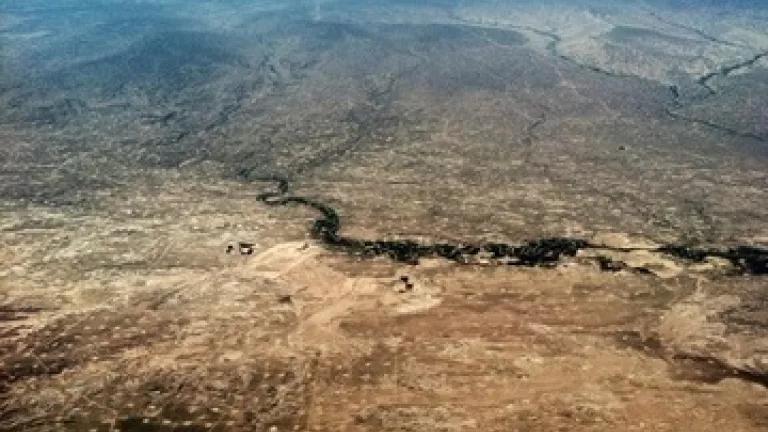
Oil and gas wells in Colorado. The impacts from drilling are undeniable, the least that should be done is to require drillers to pay their fair share.
Today the General Accounting Office (GAO), the investigatory arm of the federal government, released findings of a new investigation concluding that the Department of Interior (DOI) has failed to ensure that U.S. taxpayers are being fully compensated for revenues generated by drilling activities on their public lands. Arguably worse, despite decades of recommendations and studies that have established that DOI has been negligent in addressing this taxpayer rip-off, GAO investigators learned recently that DOI officials decided to basically throw in the towel and abandon a series of remedies that were in the works that would have attempted to address this inequity.
The Interior Department oversees hundreds of millions of acres of lands and waters that are utilized for energy development. Drilling operations that occurred in 2012 resulted in $66 billion dollars of revenues by oil and gas producers. From that pie, the federal government collected approximately $9.7 billion in royalties and other payments. But the U.S. taxpayer should be receiving far more from drilling operations that occur physically on public lands (also known as onshore lands). Compared with the royalty rate of 18.75 percent that is collected for offshore drilling activities, the Interior Department charges for onshore a paltry 12.5 percent rate – a royalty that the GAO found in 2007 to be “one of the lowest government takes in the world.” Such a bottom basement rate means that taxpayers are being shortchanged out of billions of dollars of likely revenue. That situation is bad in itself, but other successive GAO reports concluded that the agency’s accounting system to assess drilling operations was fundamentally nonexistent, and that it basically relied on the good word of oil companies to self-report via an honor system how much they should be charged for oil and gas produced on federal lands. Given that dubious practice, GAO in 2011 listed Interior’s oil and gas management on a “list of programs at high risk of fraud, waste, abuse, and mismanagement.”
Given this parade of horribles, one would expect that the Interior Department would have acted to remedy this situation out of their responsibility to taxpayers, not to mention in honor of their stewardship obligations in managing 700 million acres of lands open to potential energy development. And point in fact, initial steps were made to consider a new rule for onshore royalties, and improvements were adopted for the offshore program. But ultimately the GAO report, which was requested by Senator Ron Wyden, chairman of the Senate Energy and Natural Resources Committee, revealed that officials at the Interior Department did not share the sense of urgency one would expect for a program that was tagged as being at risk. Rather than adopting a series of recommendations offered by GAO, Interior officials informed the GAO that they had “discontinued its efforts to pursue the revised regulations because, according to Interior officials, the department does not have enough information to determine how to adjust onshore royalty rates.”
In short, Interior Department officials decided to not initiate fixes to their deeply troubled program based on a technicality, despite the fact that literally billions of dollars were at stake for taxpayers. Interior’s attitude is troubling in a number of ways. But it is especially concerning given that this posture puts millions of acres of public lands at jeopardy. When the Interior Department sanctions measures that vastly undervalue our lands for such operations as oil and gas drilling, mining, grazing, and coal extraction, to name a few, the viability of our public lands are put at additional risk. Utilizing these lands for such operations is a privilege, and the price to develop on our nation’s landscapes should be consistent with the market. But in allowing below market rates to persist, development is perversely incentivized while conservation funding becomes vastly shortchanged. One just needs to look at the number of drilling leases that sit idle – for at last count over 25,000 leases were not being utilized. The dynamic that allows this gross speculation to occur, that ties up millions of acres that could be set aside for conservation, is a direct result of the fact that the cost to drill is phenomenally low.
The GAO report does mention that Interior is considering “plans to ask the public to comment on whether and how royalty rates for new federal onshore competitive oil and gas leases should be revised to better ensure a fair return to the public.” This is a hopeful sign, but given that the GAO has repeatedly recommended that Interior should embrace key reforms for a quarter-of-a-century now, Interior needs to fast track this initiative with the same impetus that this agency has deployed in fast tracking energy development over the last decade.

